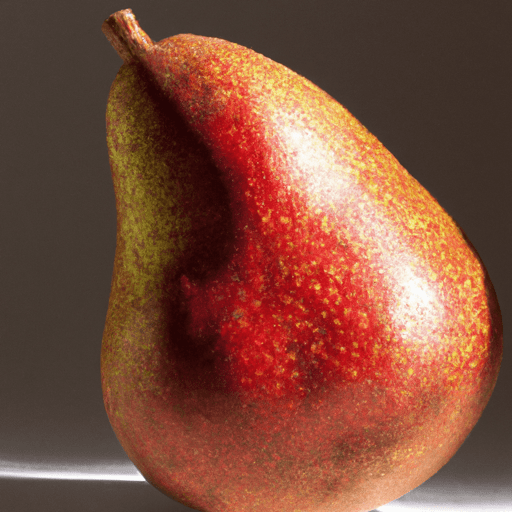Discovering the Delightful D’Anjou Pear
Have you ever come across the exquisite and versatile D’Anjou pear? With its luscious texture and sweet, slightly tart flavor, this pear variety has become a favorite among both food enthusiasts and professional chefs. Join us as we explore the world of the D’Anjou pear, from its culinary uses to its intriguing history.
A Taste Sensation
D’Anjou pears are known for their succulent and juicy flesh, making them an absolute pleasure to eat. When ripe, they have a smooth, slightly buttery texture that practically melts in your mouth. Their flavor profile is wonderfully balanced, exhibiting both sweet and slightly tangy notes. Compared to other pear varieties, D’Anjou pears are less grainy and crisp, making them incredibly enjoyable to snack on or incorporate into various dishes.
Culinary Versatility
One of the reasons the D’Anjou pear is so beloved is its incredible versatility in the kitchen. It adapts well to both savory and sweet preparations, making it a go-to ingredient for numerous dishes. Here are some common culinary uses for this delectable fruit:
Salads: Add a refreshing twist to your salads by incorporating thin slices or cubed D’Anjou pears. Their subtle sweetness pairs beautifully with greens like arugula or spinach, as well as with cheeses like goat cheese or blue cheese.
Desserts: D’Anjou pears shine in desserts, whether they star in a classic pear tart or are poached in sweet wine and spices. Their tender flesh holds up well to cooking, releasing a wonderful aroma and adding a burst of flavor to cakes, cobblers, and pies.
Cheese boards: D’Anjou pears are often found adorning elegant cheese boards. Their mild taste provides a pleasant contrast to the rich and savory qualities of various cheeses, creating a delightful pairing experience.
Sauces and chutneys: Pureed D’Anjou pears make for an excellent base for sauces and chutneys. Their natural sweetness adds depth to savory dishes such as pork or poultry. Consider combining them with ingredients like ginger, cinnamon, or balsamic vinegar for an extra kick of flavor.
Nutritional Benefits
Aside from their wonderful taste and culinary versatility, D’Anjou pears offer several health benefits. They are an excellent source of dietary fiber, which promotes digestive health and helps maintain a feeling of fullness. These pears also provide essential vitamins, including vitamin C, vitamin K, and vitamin E. Additionally, D’Anjou pears contain minerals like potassium and copper, which contribute to overall wellbeing.
A Pear with a Rich History
The story of the D’Anjou pear is rooted in France, where it originated in the mid-19th century. The pear takes its name from the Anjou region in western France, known for its fertile soils and ideal climate for fruit cultivation. D’Anjou pears reached the United States in the early 20th century and gained popularity due to their outstanding flavor and adaptable nature.
Today, D’Anjou pears are primarily grown in the Pacific Northwest region of the United States. Here, the combination of moderate temperatures, ample rainfall, and well-drained soil creates the perfect conditions for cultivating this beloved fruit.
The D’Anjou pear is a culinary gem that captivates with its enticing taste, delightful texture, and rich history. Whether you bite into its juicy flesh raw or incorporate it into your favorite recipes, this versatile fruit is sure to elevate your dining experience. So, next time you’re at the grocery store or farmer’s market, don’t hesitate to grab a few D’Anjou pears, and embark on a flavorful journey that celebrates both tradition and innovation.
Note: While D’Anjou pears are generally safe for consumption, some individuals may have allergies or sensitivities to pears. If you have any concerns, please consult a healthcare professional.
D’Anjou Pear
Origin: The d’Anjou pear, also known as Anjou pear, originated in France in the mid-19th century. It was named after the region where it was first cultivated, Anjou in the Loire Valley.
Common Uses: D’Anjou pears are versatile and can be enjoyed both raw and cooked. When ripe, they have a smooth, creamy texture with a mildly sweet and slightly tangy flavor. These pears are commonly consumed fresh in salads or as a snack, and they also work well in cooked dishes such as pies, tarts, compotes, and poached desserts.
Nutritional Benefits: D’Anjou pears are a good source of dietary fiber, providing about 6 grams of fiber per medium-sized pear. They also contain essential vitamins and minerals, including vitamin C, vitamin K, potassium, and copper. These pears are low in calories and fat, making them a healthy addition to any diet.
Unique Properties: D’Anjou pears have the unique ability to be stored and ripen off the tree. When they are harvested, they are often firm and green. They slowly ripen at room temperature over a period of several days to a week. Unlike some other types of pears, d’Anjou pears do not significantly change color as they ripen, making it necessary to check for ripeness by gently pressing near the stem end for a slight give.
Historical Significance: The cultivation and popularity of d’Anjou pears have grown over time. After being introduced to the United States in the 19th century, they became increasingly popular in regions such as the Pacific Northwest, which has favorable growing conditions for pears. Today, d’Anjou pears are one of the most widely grown and enjoyed varieties of pears in North America.




Use the share button below if you liked it.
It makes me smile, when I see it.